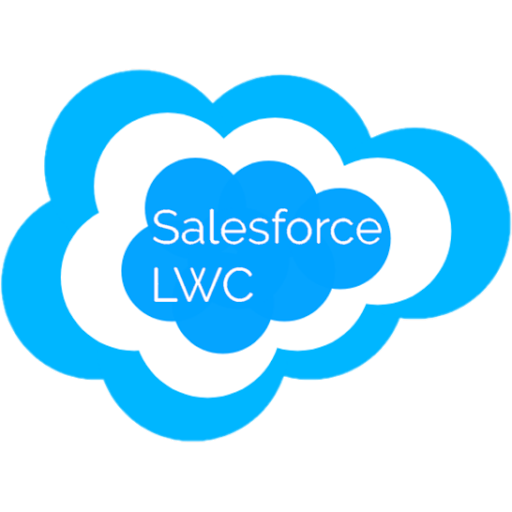Lightning Web Components (LWC) is a fairly new programming model for developing Lightning components launched in 2019. It is the new breed of framework that is lightweight and built on web standards. It allows Salesforce developers to leverage templates, custom elements, shadow DOM, modules, decorators, and other new language constructs available to them on ECMAScript 7 and above. Let’s see more on LWC In Salesforce.
Before getting to Salesforce Lightning, let us understand the difference between the web stack of 2014 and that of 2019.
The Web Stack Of 2014
The web standards of 2014 offered a limited foundation for full-stack to Salesforce developers for building complex and large-scale applications. Their components included standard elements, a rendering engine, a core language (ECMAScript 5), and events. Along with being basic in nature, this foundation had other limitations, such as:
- Lack of optimization in rendering for continuous UI transformation
- Scarcity of standard UI elements and the lack of support for creating custom elements
- The lack of modern constructs for writing large and modular apps in the core language at the client-side
- As a result, multiple vendors started doing their best to fill the gaps by offering their services. Some of these services included:
- Providing different libraries and language extensions for supporting modular and enterprise-level development, such as promises, classes, modules (CommonJS and AMD), and others.
- Developing new techniques for optimized rendering
- Introducing different for incorporating varied component models and HTML templating approaches
In 2014, Salesforce has launched the Lightning Component framework with the programming model of Aura. This was aimed at leveraging web development processes and helping developers create large-scale client-side apps on the web. As this framework lacked web standards, the Lightning Component framework was launched with its own component model and modular programming model.
Despite the efforts of software vendors, the Lightning Component framework posed some challenges to developers. Some of these challenges include:
- The frameworks becoming the language of the platform. Angular, React, and Lightning Component framework are all JavaScript frameworks but provide considerable abstraction, making them feel like different languages.
- This often resulted in the skills not being transferable, making it difficult for developers to ramp up the development processes.
- Also, the component did not allow the apps and components written using this framework to be interoperable.
The 2019 Web Stack
As opposed to the 2014 web stack, the weight of the 2019 stack tilts heavily towards web standards to overcome the limitations of the former. With the lunch of Lightning Web Components, the older stack got its much-needed update, making Salesforce a full-fledged application development platform for enterprise-level applications.
Several features that earlier required frameworks are now available standard. Now, developers no longer need a dedicated proprietary model, proprietary modules, proprietary language extensions, etc.
As the core stock became standardized in 2019, it opened up new doors to a range of new and robust frameworks. These frameworks were not merely concerned with filling the gaps left in the core stack. Instead, they provided a thin layer of specialized services along with a standard stack that is now capable of developing large-scale applications.
Some of the major benefits of the 2019 web stack include:
- A common programming model for developers
- A common component model for seamless development
- Transferable skills making them easier to find a ramp-up by developers
- Components that are inter-operable
- Improved performance due to the core features being implemented naively in the web engines instead of within JavaScript framework abstractions
Different Layers Provided By Lightning Web Components
On top of the core stack, LWC provides the following three layers to the developers:
- Base Lightning Components – These are sets of more than 70 UI components built as custom components
- Lightning Data Service – This later provides developers with declarative access to Salesforce data and metadata, including data caching and sync.
- User Interface API – This layer provides an underlying service that allows developers to make basic Lightning Components and Lightning Data Service metadata aware to leverage productivity.
Coexistence Of LWC And Aura Components
With the launch of Lightning Web Components, developers can build Lightning Components in two different ways – by using Aura Components and via LWC.
The framework allows Aura Components to leverage their own component model, templates, and modular development programming model. On the other hand, the LWCs are built on web standards breakthroughs of the previous five years.
It is important to note that Aura Components and LWC can coexist and interoperate within a system as they share high-level services.
Here are some of the key points to remember when it comes to the coexistence of LWC and Aura Components:
- Developers can include LWC in Aura Components while development
- Lightning Web Components and LWC can coexist on the same web page
- Both the frameworks share the same base Lightning Components which were already implemented as LWC
- Both the frameworks share the same underlying services, such as user interface API, Lightning data service, etc.)
If a user is already developing Lightning Components with the Aura programming model, they can continue doing so without any hassle. They can build new components using Aura or LWC at their convenience. Both the frameworks can coexist and interoperate without the developer having to make any major change to their approach.
If there is a need to do so, developers can choose to migrate from Aura Components to Lightning Web Components, starting with using the components that at are most beneficial for robust performance.
However, if a developer is new to programming and Salesforce development, it is always advisable for them to start with Lightning Web Components for building powerful and industry-specific applications. This would give them a good head-start into the field of Salesforce development and keep them in tune with the latest technological advancements.
The Final Word
Lightning Web Components are designed to improve the performance of Salesforce developers by providing them with tools and features for building large-scale applications. This helps your organization provide improved services to your customers through suitable applications, streamline your processes, and obtain the traction you have always desired.





